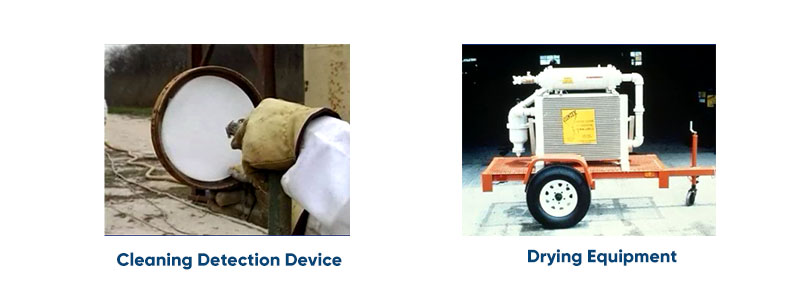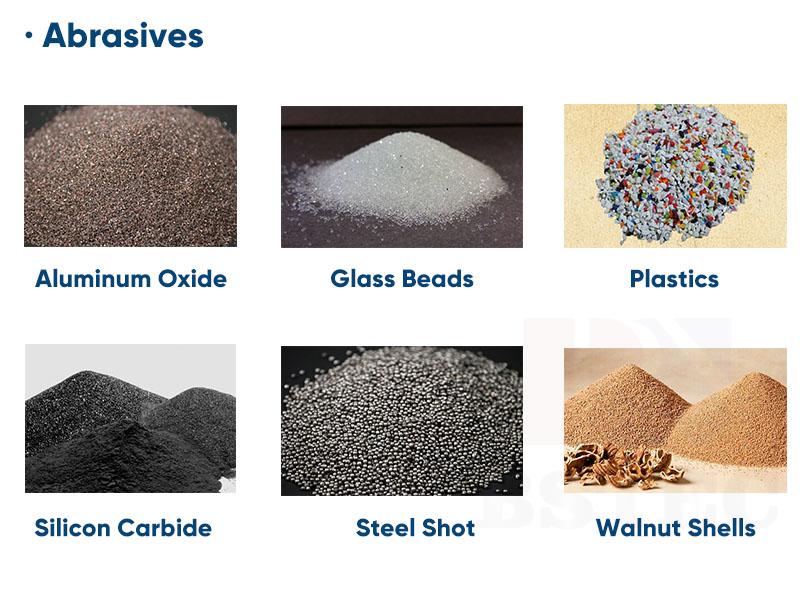Key Factors of Sandblasting
Key Factors of Sandblasting
——Master sand blasting from five aspects
Sandblasting is a process of surface treatment by propelling abrasive particles at a high velocity toward it. It is a simple and high-effective way to create the desired surface roughness. However, most people may not know how to achieve the best blasting. For this case, let us learn more about the key factors of sandblasting.
Factor 1: Compressed air
 Sandblasting process generally involves three main parts, which are the air compressor, abrasive particle, and nozzle. Compressed air, as the first step, is crucial for propelling abrasives. Its quality is mainly determined by two aspects: air pressure and air quality. Different surface roughness requirement needs suitable air pressure. A surface that is hard to clean needs higher pressure, while a soft one demands lower pressure to reduce the effect of force. Air quality means air cleanliness that can be measured by the cleaning detection device of compressed air. Moreover, there is also drying equipment for removing moisture in the air.
Sandblasting process generally involves three main parts, which are the air compressor, abrasive particle, and nozzle. Compressed air, as the first step, is crucial for propelling abrasives. Its quality is mainly determined by two aspects: air pressure and air quality. Different surface roughness requirement needs suitable air pressure. A surface that is hard to clean needs higher pressure, while a soft one demands lower pressure to reduce the effect of force. Air quality means air cleanliness that can be measured by the cleaning detection device of compressed air. Moreover, there is also drying equipment for removing moisture in the air.
Factor 2: Abrasives
Abrasive blasting has many applications, each of which demands the use of different types of abrasive particles, known as the blasting media. Common abrasives are described below.
Aluminum Oxide: Aluminum oxide features its high hardness and strength. It is an angular long-lasting media for fast etching that leads to an anchor pattern of surface profile.
Glass Beads:It is round soda-lime glass. Compared with other materials, glass is not as aggressive as blasting media like steel shot or silicon carbide. Abrasives of glass beads have minimal stress on the surface to produce a bright and satin matte type finish.
Plastics: It is a soft abrasive that is suitable for mold or plastic parts cleaning.
Silicon Carbide: It is the hardest abrasive material available fitting well in cleaning the most challenging surface.
Steel Shot & Grit: It is a highly effective abrasive for its roughness and high recyclability.
Walnut Shells: It is a natural material with hardness made from crushed walnut shells, which is harder of the soft abrasives.
 Factor 3: Nozzle
Factor 3: Nozzle
Nozzle plays a vital role as the last part in blasting, which largely affects the surface finishing result. According to different use scenarios and surface treatment requirements, we need to select the most suitable sandblasting nozzle, otherwise, the effect will be greatly reduced.
The Size
Each type of nozzle has different sizes. Choose a nozzle with too small of a bore and you’ll waste pressure, while if it is too big, you’ll lack the pressure to blast productively.
The Material
The three most popular materials used today for blast nozzle are boron carbide, silicon carbide, and tungsten carbide. Boron carbide nozzles feature highly hard, lightweight, and excellent abrasion resistance. Silicon carbide nozzles are similar to boron carbide. It has inferior performance in wear resistance. Tungsten carbide nozzles are hard and have a stable structure needed less maintenance, while it is heavy.
The Type
Venturi Nozzle: It was created based on the principle of the Venturi Effect that is a reduction in pressure of a fluid leading to an increase in the fluid’s velocity. Therefore, its blast pattern structure makes it high-effective in blasting.
Straight Bore Nozzle: It creates a tight blast pattern that is used where small parts or light blasting is needed.
Water Induction Nozzle: It is a kind of nozzle both available in dry blasting and wet blasting. Compared with other nozzles, it is friendly to health for suppressing dust.
Internal Pipe Blast Nozzle: It is used to clear the inner wall of the pipe that blasts in a cone pattern equipped with various tools such as collar sets, centering carriage, etc.
Curved Nozzle: It features in curved angle of outlet, which promotes to access for sandblasting into hard or tight-fitting areas.
Factor 4: Surface Condition
Some surface textures are hard and require a large impact force to change the surface profile. Some surfaces are more fragile, requiring less impact.
Factor 5: Lighting
There are various application scenarios for sandblasting. It may be indoors or outdoors. Some sandblasting will be carried out in a sandblasting cabinet. In this case, the operator needs to prepare good-quality lighting when performing sandblasting to better observe the sandblasting situation.
Determine the composition of these five elements according to your sandblasting needs, and you will gain an ideal sandblasting effect.













